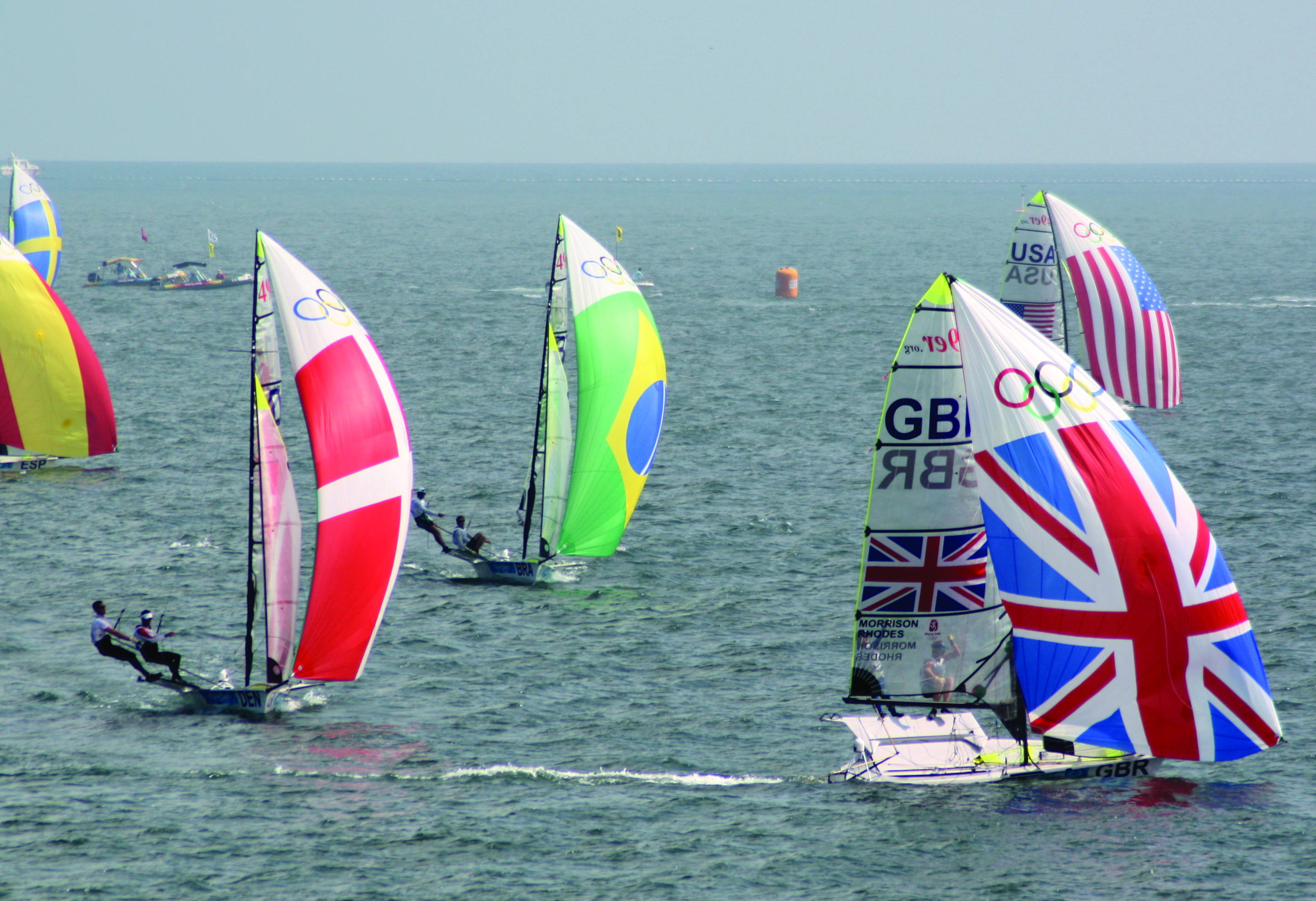Judging Laylines In Asymmetrics
Book Extract
Judging laylines in an asymmetric boat can be very tricky, especially if the wind is unstable, because you would have already discovered just how much variations in wind strength and wind direction can affect the direction of your boat.

Laylines can move around with every gust and lull
If it is lighter winds, then it may pay to overstand the layline. This means that you keep lots of apparent wind running over the sails as you approach the leeward mark, and anybody who is coming in a little bit too high and a little bit too deep will pay a high price with vastly reduced boatspeed. Remember, gennakers are hugely efficient sails, but only when they have flow across the sail. Coming in too high in light winds will kill your boatspeed.
So make sure that you are not one of those boats trying to run too deep with a limp gennaker. Make sure that you are one of the ones coming in hotted up and with lots of speed into that leeward mark, because your apparent wind will carry you through the dirty air of the slow boats to windward.
If you do find that you are coming into a leeward mark a little too high and you are starting to run deep, look around you, and make a decision about whether you should cut your losses early and put in two more gybes to get down to the mark. In light winds, the loss of distance from two gybes is minimal, and the boat handling is relatively straightforward. More often than not it’s better to go for the double gybe than blob along with a floppy gennaker.
In stronger winds, this is a bigger decision because you lose more distance through a gybe compared with your straight-line speed. Not only that, there’s also the risk of capsizing. So you really have to make this decision based on your confidence and your ability to gybe effectively.
With that in mind, we’ve already said that generally in light winds it pays to overstand the gybe mark in light airs. The same is often true in strong airs because, rather than facing the two extra gybes and the risk of broaching or capsizing, it can be better to overstand the layline. It might mean that you have to drop the gennaker earlier and do some two- sail reaching to get back up to the leeward mark. But that may be a price worth paying compared with the risk of those two extra gybes and a resulting possible capsize.
Are you starting to see how the quality of your boat handling affects the quality of your tactical decisions?
EXPERT ADVICE
Chris Nicholson: When To Gybe For The Layline
“Obviously, as you approach the layline, your time for gybing is running out. In most conditions I like to try to gybe a little bit early of the layline so that I can still get back to the centre of the course. In light winds you can sometimes get away with overstanding a little bit, as other boats above you try to soak too low to get to the mark. But be careful. Take a careful check of the pressure across the course before making this crucial gybe.
In strong winds, bear in mind it could take some time to get the gybe in safely, especially if there’s a big seaway, so aim to get your gybe in earlier than you might think. When it’s windy, don’t be too sad if one or two boats roll you, just so long as you keep on moving – and stay upright!”
Tidal Considerations
These differ very little from those in other conventional spinnaker boats, except that the potential for gain or loss in, say, a strong tidal situation is much greater. This is because your separation across the course from one side to the other is much larger than on boats with spinnaker poles that tend to stick closer to the rhumb line. If you are going down the run with the tide running with you, you can afford to gybe early even if you find yourself soaking to the mark, as the tide will carry you there. Far better to do that than gybe late and find you’re having to tight-reach back to the mark as the tide tries to sweep you off downwind.
On the other hand, with the tide running against you down the run, you are safer to overstand on your final gybe, and come in towards the leeward mark with pace and control. There’s nothing worse than running deeper and deeper towards the leeward mark against an adverse tide. The more you bear away the less efficient the gennaker becomes, and you often see people wrapping themselves around the leeward mark as a result. And that can ruin your day.
© Not to be reproduced without written permission from Fernhurst Books Limited.
The Asymmetric Dinghy Book is written by Andy Rice. Andy is a championship winning dinghy sailor. A spell in the British Olympic Squad led him to sailing journalism – he now writes for a number of dinghy and yacht racing magazines including Seahorse, Yachts & Yachting, Yachting World and Sailing World. He is editor of the go-faster website SailJuice.com, aimed at sailors who want to improve their skills, and owner of Sailing Intelligence, a specialist media agency for the sailing and marine market.